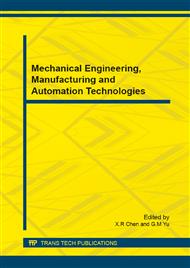p.198
p.204
p.209
p.213
p.217
p.222
p.226
p.231
p.235
The Poultry Voice Classification Model Based on EMD and Support Vector Machine
Abstract:
According to the non-stationary and non-linear characteristics of poultry voice and the situation that it`s hard to obtain enough sound samples, a poultry voice classification method based on Empirical Mode Decomposition (EMD), Teager energy transformation, and Support Vector Machine (SVM) is proposed. Firstly, the poultry voice signals are decomposed into a finite number of intrinsic mode function (IMF).Then, the Teager energy of five IMFs filtered are used to form characteristic vectors. Finally, the eigenvectors are put into a support vector machine classifier . The results of animal voice signals experimental recognition showed that this method had high accuracy and good generalization abilities even in the case of small number of samples. The approach proposed could identify the poultry voice effectively.
Info:
Periodical:
Pages:
217-221
Citation:
Online since:
December 2014
Authors:
Price:
Сopyright:
© 2015 Trans Tech Publications Ltd. All Rights Reserved
Share:
Citation:


